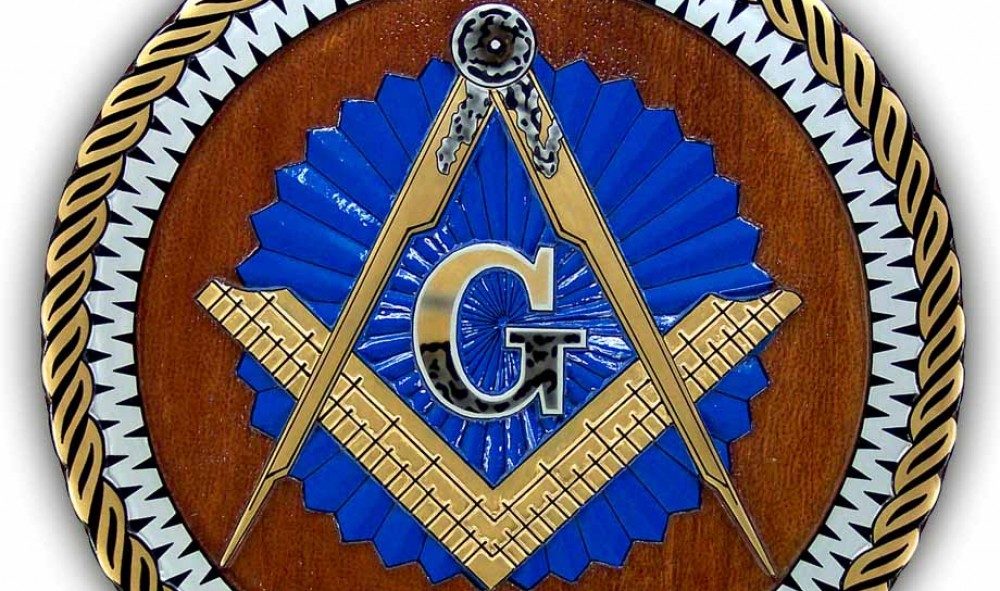So often when people talk about Freemasonry in a negative way they’ll talk about people like Aleister Crowley, using him as an example of an evil mason, if they’re not just plucking him out of the air they might even include a picture of him in regalia. Quite apart from the fact that using one individual as evidence that all masons are evil is a logical fallacy there’s a major problem, he was never a mason, in fact he was a fake, so much so that on attempting to gain entrance to the United Grand Lodge of England with his qualifications he was laughed out of the building. So today we will be looking at fake masonry, how to spot it and how it affects actual masons. Just to clarify, I’m not going to include formerly regular masonic groups who have through philosophical differences have become irregular.
Mainstream regular masonry is highly varied with different customs present in nearly every single Grand Lodge, but sometimes you’ll come across a group who are so wildly different from the norm that there’s no way they could be truly masons, so why would they claim to be? Well part of the reason would probably be the cachet associated with masonry, an ancient fraternity that seeks to help people in need, has had numerous famous members and has an air of mystery about it, who wouldn’t be intrigued? That intrigue then leads to be people wanting to join, and this is where the fakes come in, after all if joining real masonry costs money, then a fake masonic organisation will also cost money, the main difference being that these shams will take the money and run, or you’ll find yourself in a lodge where there are few other members and no chance of visiting any other lodge.
Another reason would be ego. That is to say that the creator of the fake group seeks firstly personal aggrandisement by tying their name to a senior position within an organisation, and that they believe that they can do better than the original, surely if this were the case they would have joined a regular lodge and be one of its high fliers. In most cases the reality is that these are people who were refused membership or expelled and so have decided to gain either kudos or cash by creating something out of thin air.
Probably the most common form of fake masonry would be the internet Grand Lodge, that is a website is set up claiming to be a Grand Lodge, often with something close to the name of a real one, which solicits donations, or is simply a vehicle for the creator to strut around as a Grand Master. These should be fairly easy to spot, they’ll often be long of rhetoric, short of detail, particularly about where they meet and who the other officers beside the Grand Master are. You’ll also tend to find that the supposed Grand Master, usually accompanied by various sock puppets will be posting on masonic forums trying to drum up some kind of recognition. From the outset this is frankly rather sad, and if money is being solicited fraudulent too and from various accounts of these kinds of scams the creators can become extremely vicious when confronted about their activities.
Beyond the simple internet Grand Lodge you’ll find some have gone a step further and have actually created a real lodge that actually meets (I use real in this case to mean physical rather than a purely internet creation). The first example that comes to mind is the Grand Orient of US, a now defunct group which did indeed have a lodge. But within seven years it had all fallen apart and now all their websites are down and out, guess no one could be bothered to spend $15 to keep the domain name. Their claim to masonic status was mostly based on being given permission by the Grand Orient of France (an irregular body which started out as regular, but hasn’t had recognition since about 1877) to use their rituals. But the GOOUS was a self created body with no historical link to any of masonic group, and even the Grand Orient of France found their behaviour intolerable and removed anything hinting at acceptance from their website.
Then we come to the out and out frauds, this is the heading that Mr. Crowley’s masonry comes under. Just as you find people selling fake degrees, or “life experience degrees” which are worth less than the paper they are printed on, you’ll find masonic degree mills, you pay a fee and you’ll get a fancy certificate saying that you’re x,y or z and that you can wear the regalia of that rank (available from the place that sold you the degree at a reasonable price I’m sure). Thus it was with Aleister Crowley, he bought himself a 33rd degree and the regalia, attempted to gain entrance to the United Grand Lodge of England and was sent packing, interestingly enough the person who sold him the degrees was the first person in the USA to be found guilty of mail fraud. Quite simply to claim you have a masonic degree you will need to have gone through the ceremony, with few exceptions where someone is given a degree at sight (usually this is for more honorary members and not widely practised) and even then they need to have gone to a meeting for it to happen.
So there we are, disgruntled former members, conmen and chancers, these are the make up of fake masonic groups. It’s an unfortunate truth that anyone can stick an apron on and make claims of masonic status, but with the application of some common sense you can avoid being drawn into their schemes. If you’re not sure about a group’s masonic status I recommend checking out the United Grand Lodge of England’s list of regular Grand Lodges at http://www.ugle.org.uk/about/foreign-grand-lodges
